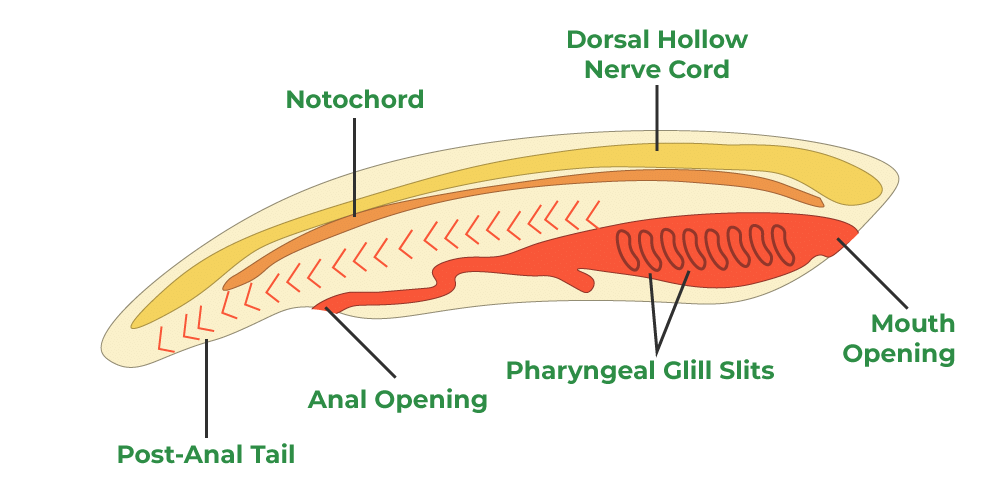Important Diagrams: Animal Kingdom | Biology Class 11 - NEET PDF Download
Animal Kingdom
The Animal Kingdom, also known as Animalia, is a vast and diverse group of multicellular organisms that inhabit our planet. The Animals are classified into various phyla, classes, orders, families, and genera can be understood easily by going through the diagrams given below
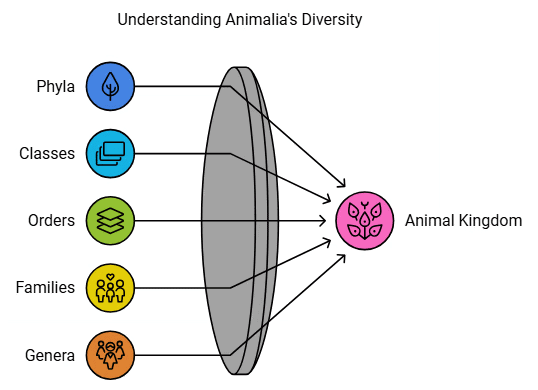
1: Diploblastic and Triploblastic Organisation
The concept of "levels of organisation" in biology refers to the hierarchical way in which living organisms are structured, from simple to complex.
Two types of organisation
(a) Diploblastic Organisation:
- Two germ layers: ectoderm and endoderm.
- Found in simple animals like jellyfish and corals.
- Lacks a middle mesoderm layer.
(b) Triploblastic Organisation:
- Three germ layers: ectoderm, mesoderm, and endoderm.
- Found in more complex animals like humans, insects, and mollusks.
- Has a middle mesoderm layer, allowing for the development of complex tissues and organs.
 Types of Organisation
Types of Organisation
2: Coelom
Classification Based on Body Cavity
Coelomates:
- Definition: Animals with a body cavity (coelom) fully lined by mesoderm.
- Examples: Annelids, molluscs, arthropods, echinoderms, hemichordates, and chordates.
- Significance: The coelom provides a space for organ development and greater flexibility.
Pseudocoelomates:
- Definition: Animals with a body cavity (pseudocoelom) not entirely lined by mesoderm; mesoderm is present only as scattered pouches between the ectoderm and endoderm.
- Examples: Aschelminthes.
- Significance: The pseudocoelom serves as a hydrostatic skeleton and space for organ development, though less structured than a true coelom.
Acoelomates:
- Definition: Animals lacking a body cavity between the body wall and the gut wall.
- Examples: Platyhelminthes.
- Significance: These animals have solid bodies with organs embedded within a mass of mesodermal tissue.
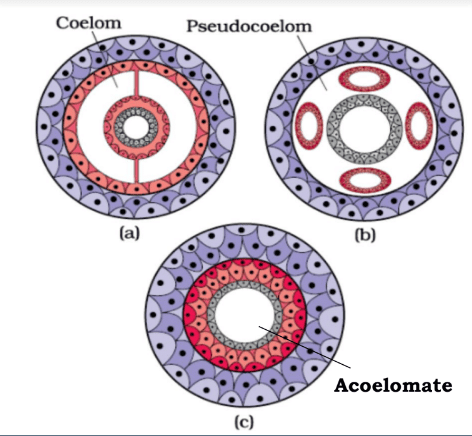
3: Symmetry
It refers to the balanced arrangement of body parts or shapes in living organisms. There are three main types of symmetry discussed:
- Radial Symmetry: Body parts are arranged around a central point, often seen in aquatic organisms like jellyfish.
- Bilateral Symmetry: Body is divided into two mirror-image halves along a central plane, common in animals with definite front and back, like humans and insects.
- Asymmetry: No particular pattern or arrangement of body parts, relatively rare in complex animals.
 Types of Symmtery
Types of Symmtery
4: Segmentation
Segmentation or Metamerism is a pattern of body organization where an animal's body is divided into repeating segments, both externally and internally.
- This repeating structure aids in efficient movement, regeneration, and specialization of functions in each segment.
- Earthworms and some other animals exhibit metamerism.
- Earthworms have a highly segmented body, with each segment called a "metamere" or "somite."
- These segments are arranged in a linear series from the anterior (head) end to the posterior (tail) end of the worm
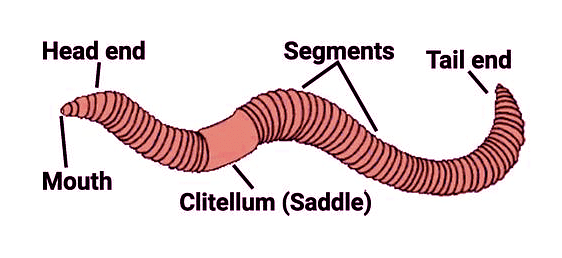 Segmentation in Earthworm
Segmentation in Earthworm
5: Hemichordata - Balanoglossus
Hemichordates, including organisms like Balanoglossus and Saccoglossus, were initially classified as a subphylum within the phylum Chordata due to their anatomical similarities with chordates.
- Hemichordates are now recognized as a distinct phylum within the animal kingdom, separate from chordates.
- They are considered non-chordates because they lack certain key chordate features like a well-developed notochord and a dorsal hollow nerve cord.
- Anterior Proboscis: Balanoglossus has an anterior portion known as the proboscis.
- Collar Region: Immediately behind the proboscis is the collar region, which is a short segment.
- Trunk: The trunk follows the collar region and constitutes the longest part of the body
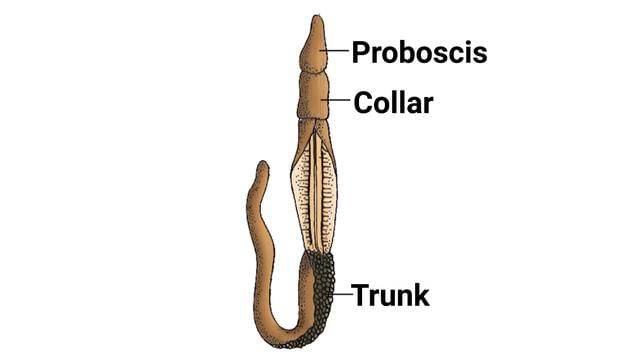 Balanoglossus
Balanoglossus
6: Chordata - Characteristics
Chordata is a phylum of animals, including vertebrates (like humans), known for these key characteristics:
- Notochord: A flexible rod-like structure providing support.
- Dorsal Nerve Cord: A central nervous system precursor.
- Pharyngeal Slits: Structures for various functions, often related to feeding and respiration.
- Post-Anal Tail: An extension beyond the anus.
- Endostyle/Thyroid Gland: Involved in filter-feeding and hormone production.
- Bilateral Symmetry: Left-right body symmetry.
- Triploblastic and Coelomate: Three germ layers and a fluid-filled body cavity.
- Closed Circulatory System (in most): Blood circulates in vessels.
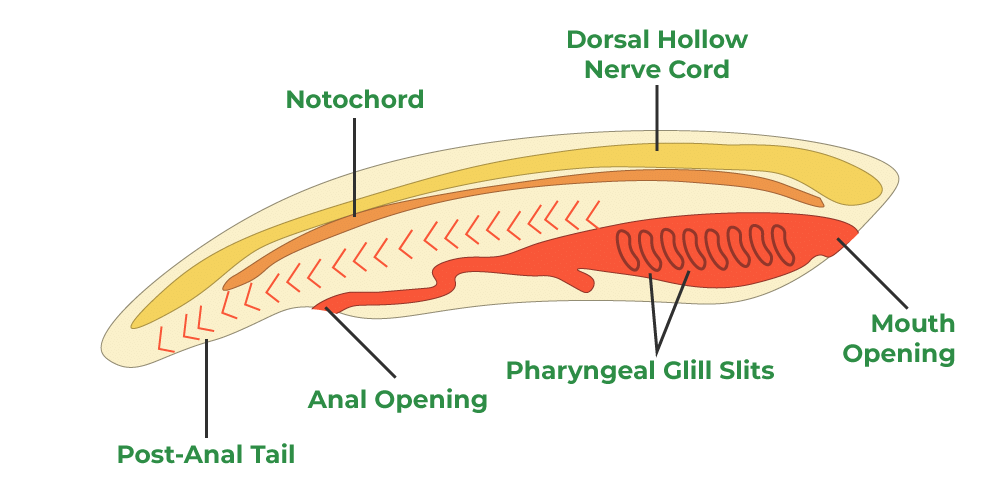 Chordata- Characterstics
Chordata- Characterstics
7: Circulatory System
The circulatory system consists of the heart, blood vessels, and blood, and it is responsible for the circulation of oxygen, nutrients, hormones, and other vital substances to cells while removing waste products.
The two major types :
(a) The open circulatory system
- In an open circulatory system, the circulatory fluid (which is often called "hemolymph") is not enclosed in blood vessels throughout its journey.
- The system is found in many invertebrate organisms, such as arthropods (like insects and crustaceans), some molluscs, and certain other lower animals.
(b) The closed circulatory system.
- In a closed circulatory system, the circulatory fluid (blood) is enclosed in a network of blood vessels that form a closed loop.
- This system is found in vertebrates, including humans, as well as some more advanced invertebrates like certain annelids (segmented worms) and cephalopod mollusks (like squids and octopuses).
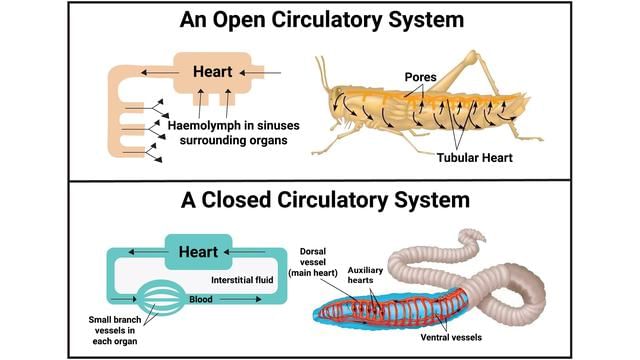
Diagram Based Previous Year Questions - NEET
Q1: Important characteristic that hemichordates share with chordates is
(a) Ventral tubular nerve cord
(b) Pharynx with gill slits
(c) Pharynx without gill slits
(d) Absence of notochord
Ans. (b)
Solution.
- An important characteristic that hemichordates and chordates share is presence of pharyngeal gill slits. Gill slits are dorsal in position in hemichordates whereas they are lateral in chordates.
A true notochord does not occur in hemichordates. Nervous system is distinctly of vertebrate type being intraepidermal in position and having a ventral nerve cord
Q2: Bilaterally symmetrical and acoelomate animals are exemplified by : (NEET 2020)
(a) Aschelminthes
(b) Annelida
(c) Ctenophora
(d) Platyhelminthes
Ans. (d)
Solution.
Flatworms are bilaterally symmetrical, triploblastic and acoelomate animals with organ level of organisation. Aschelminthes is triploblastic, bilaterally symmetrical and pseudocoelomate. Annelida is triploblastic, bilaterally symmetrical and coelomate. Ctenophora is radially symmetrical, diploblastic.
Types of Symmtery
Some Important Terms
Classification of Animals
- Cellular level of organisation: In sponges, the cells are arranged as loose cell aggregates, i.e., they exhibit cellular level of organisation.
- Tissue level of organisation: In coelenterates, the arrangement of cells is more complex. Here the cells performing the same function are arranged into tissues, hence is called tissue level of organisation.
- Organ level organisation: Tissues are grouped together to form organs, each specialised for a particular function. e.g., platyhelminthes.
- Organ system level: organs are associated to form functional systems e.g., Annelids, Arthropods, Molluscs, Echinoderms and Chordates.
- Open type circulatory system: Blood pumped out through heart. Not confined to blood vessels. Cells and tissues are directly bathed in it.
- Closed type circulatory system: Blood is circulated through blood vessels (arteries,veins and
- capillaries)
- Asymmetrical: Sponges are mostly asymmetrical, i.e., any plane that passes through the centre does not divide them into equal halves.
- Radial Symmetry: When any plane passing through the central axis of the body divides the organism into two identical halves, it is called radial symmetry.
- Bilateral Symmetry: Animals like annelids, arthropods, etc., where the body can be divided into identical left and right halves in only one plane, exhibit bilateral symmetry.
- Diploblastic animals: Animals in which the cells are arranged in two embryonic layers, an external ectoderm and an internal endoderm, are called diploblastic animals, e.g., coelenterates.
- Triploblastic animals: Those animals in which the developing embryo has a third germinal layer, mesoderm, in between the ectoderm and endoderm, are called triploblastic animals.
- Coelom & Coelomates: The body cavity, which is lined by mesoderm is called coelom. Animals possessing coelom are called coelomates, e.g., annelids, molluscs, arthropods, echinoderms, hemichordates and chordates.
- Pseudocoelom & Pseudocoelomates: In some animals, the body cavity is not lined by mesoderm, instead, the mesoderm is present as scattered pouches in between the ectoderm and endoderm. Such a body cavity is called pseudocoelom and the animals possessing them are called pseudocoelomates, e.g., aschelminthes
- Acoelomates: The animals in which the body cavity is absent are called acoelomates, e.g., platyhelminthes.
- Metamerism: In some animals, the body is externally and internally divided into segments with a serial repetition of at least some organs. For example, in earthworm, the body shows this pattern called metameric segmentation and the phenomenon is known as metamerism.

- Sea walnuts or comb jellies: Ctenophores, commonly known as sea walnuts or comb jellies.
- Bioluminescence: Bioluminescence (the property of a living organism to emit light) is well-marked in ctenophores.
- Flame cells: Specialised cells called flame cells help in osmoregulation and excretion.
- Malpighian Tubules: Arthropoda Excretion takes place through malpighian tubules.
- Water Vascular System: The most distinctive feature of echinoderms is the presence of water vascular system which helps in locomotion, capture and transport of food and respiration.
- Radula: In mollusca, the mouth contains a file-like rasping organ for feeding, called radula.
- Poikilotherms: An organism that cannot regulate its body temperature except by behavioural means such as basking or burrowing.
- Parapodia: Aquatic annelids like Nereis possess lateral appendages, parapodia, which help in swimming.
- Homoiothermous: They are warm-blooded (homoiothermous) animals, i.eThey are able to maintain a constant body temperature.
- Mammary glands: The most unique mammalian characteristic is the presence of milk producing glands (mammary glands) by which the young ones are nourished.
|
150 videos|399 docs|136 tests
|
FAQs on Important Diagrams: Animal Kingdom - Biology Class 11 - NEET
| 1. What is the difference between diploblastic and triploblastic organisms? |  |
| 2. What is a coelom and why is it important in animals? |  |
| 3. How does symmetry in animals influence their body plan? |  |
| 4. What is segmentation and what advantages does it provide to organisms? |  |
| 5. What are the key characteristics of the phylum Chordata? |  |


